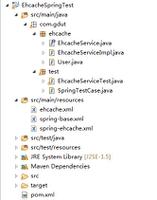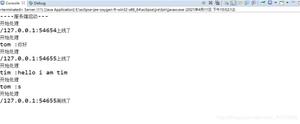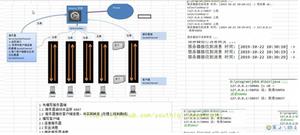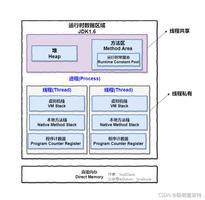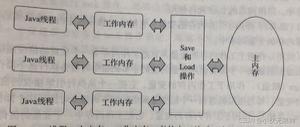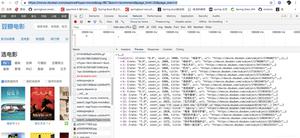Java 生产者消费者模型的三种实现过程

生产者一边在生产,消费者一边消耗。当库存满的时候生产者暂停生产,直到有空位;当库存空的时候消费者暂停消费,直到有产品。
关键点:
- 生产者和消费者都是在不断生产和消费的,是同时并发的,不应该等满了再消费 / 空了再生产。
- 前提条件是生产速度和消费速度不同。
设计方法:
- 生产者和消费者分别使用一个线程模拟。将其抽象分别继承Runnable接口,生产和消费的行为放在Runnable的run()方法中.
- 控制生产和消费的速度不同。可以使每次生产 / 每次消费 之间的间隔不同,达到 生产比消费快 或者 消费比生产快 的效果.
- 生产者拿到仓库锁,判断是否还有空位
- 如果没有空位,就让自己先别再去试图抢占锁了(将自己放入等待池,wait());
- 如果有空位,就生产一个,然后唤醒(notify())等待池中的线程(包括先前因为仓库空而wait()掉的线程)来竞争锁。
- 消费者拿到仓库锁,判断是否还有可以消费的商品
- 如果没有商品了,就让自己先别再去试图抢占锁了(将自己放入等待池,wait());
- 如果有空位,就消费一个,然后唤醒(notify())等待池中的线程(包括先前因为仓库满而wait()掉的线程)来竞争锁。
- 当某个生产者线程拿到锁,发现仓库满了,会wait()自己,而不notify()(防止又唤醒一个生产者线程),直到有一个消费者线程拿到锁,消费后,才notify()等待池中的生产者线程,才继续生产。(消费者同理)
1.使用synchronized 关键字
public class ProducerCustomerModel { static int MAX_SIZE = 10;
static List<Integer> list;
public static void main(String[] args) {
list = new ArrayList<>();
new Thread(new Producer()).start();
new Thread(new Customer()).start();
}
private static class Producer implements Runnable{
@Override
public void run() {
while(true){
try {
Thread.sleep(250); // 生产效率:每250ms一个
} catch (InterruptedException e) {
e.printStackTrace();
}
synchronized (list){
// 第一步:拿到锁
while(list.size() >= MAX_SIZE) {
// 第二步,判断能不能生产。
// 如果发现库存满了,就进入等待池,放弃锁,线程暂停。
try {
list.wait();
} catch (InterruptedException e) {
e.printStackTrace();
}
}
// 如果有,生产一个
list.add(1);
System.out.println("生产了一个产品,现在有"+list.size()+"个产品。");
// 唤醒消费线程,可以试图消费了。
list.notifyAll();
}
}
}
}
private static class Customer implements Runnable{
@Override
public void run() {
while(true){
try {
Thread.sleep(500); // 消费效率:每500ms一个
} catch (InterruptedException e) {
e.printStackTrace();
}
synchronized (list){
// 第一步:拿到锁
while(list.size()==0){
// 第二步,判断能不能消费。
// 如果发现没有商品了,就进入等待池,放弃锁,线程暂停。
try {
list.wait();
} catch (InterruptedException e) {
e.printStackTrace();
}
}
// 如果有,消费一个
list.remove(0);
System.out.println("消费了一个产品,现在有"+list.size()+"个产品。");
// 唤醒生产线程,可以试图生产了。
list.notifyAll();
}
}
}
}
}
2.使用ReenterantLock
ReenterantLock与synchronized类似,synchronized在语句块结束后会自动释放锁,ReenterantLock需要unlock()。ReenterantLock还支持公平锁(等待最久的先拿锁)。
需要设置两个条件,分别用于空/满时候的信号。
public class ProducerCustomerModelReentrantLock {
static ReentrantLock lock = new ReentrantLock(true);
static int MAX_SIZE = 10;
static List<Integer> list;
static Condition ableToProduce,ableToCustom;
public static void main(String[] args) {
list = new ArrayList<>();
ableToCustom = lock.newCondition();
ableToProduce = lock.newCondition();
new Thread(new Producer()).start();
new Thread(new Customer()).start();
}
private static class Producer implements Runnable{
@Override
public void run() {
while(true) {
try {
Thread.sleep(250);
} catch (InterruptedException e) {
e.printStackTrace();
}
lock.lock();
while(list.size()>=MAX_SIZE) {
try {
ableToProduce.await();
} catch (InterruptedException e) {
e.printStackTrace();
}
}
list.add(1);
System.out.println("生产了一个产品,现在有"+list.size()+"个产品。");
ableToCustom.signal();
lock.unlock();
}
}
}
private static class Customer implements Runnable{
@Override
public void run() {
while(true) {
try {
Thread.sleep(500);
} catch (InterruptedException e) {
e.printStackTrace();
}
lock.lock();
while(list.size()==0) {
try {
ableToCustom.await();
} catch (InterruptedException e) {
e.printStackTrace();
}
}
list.remove(0);
System.out.println("消费了一个产品,现在有"+list.size()+"个产品。");
ableToProduce.signal();
lock.unlock();
}
}
}
}
3.使用BlockingQueue
阻塞队列本身就是当队满的时候阻塞线程,故直接使用就可以实现生产者/消费者模型。
阻塞队列内部也是使用ReenterantLock实现的。
public class ProducerCustomerModelUsingBlockedQueue { static BlockingQueue<Integer> queue;
static int MAX_SIZE = 10;
public static void main(String[] args) {
queue = new ArrayBlockingQueue<>(MAX_SIZE);
new Thread(new Producer()).start();
new Thread(new Customer()).start();
}
private static class Producer implements Runnable{
@Override
public void run() {
while(true){
try {
Thread.sleep(300);
} catch (InterruptedException e) {
e.printStackTrace();
}
try {
queue.put(1);
System.out.println("生产了一个产品,现在有"+queue.size()+"个产品。");
} catch (InterruptedException e) {
e.printStackTrace();
}
}
}
}
private static class Customer implements Runnable{
@Override
public void run() {
while(true){
try {
Thread.sleep(400);
} catch (InterruptedException e) {
e.printStackTrace();
}
try {
queue.take();
System.out.println("消费了一个产品,现在有"+queue.size()+"个产品。");
} catch (InterruptedException e) {
e.printStackTrace();
}
}
}
}
}
以上是 Java 生产者消费者模型的三种实现过程 的全部内容, 来源链接: utcz.com/z/390631.html

